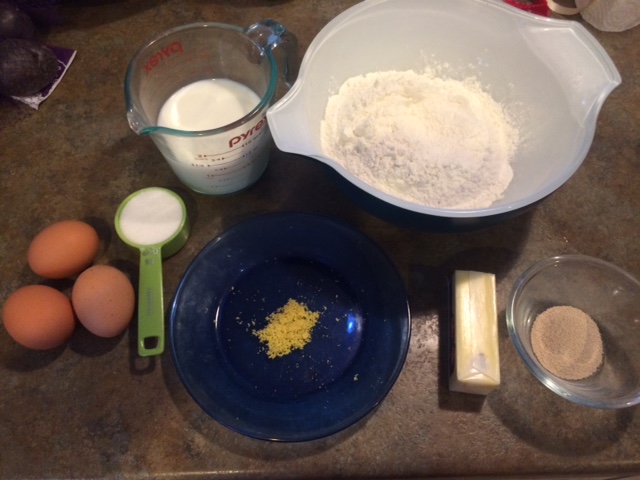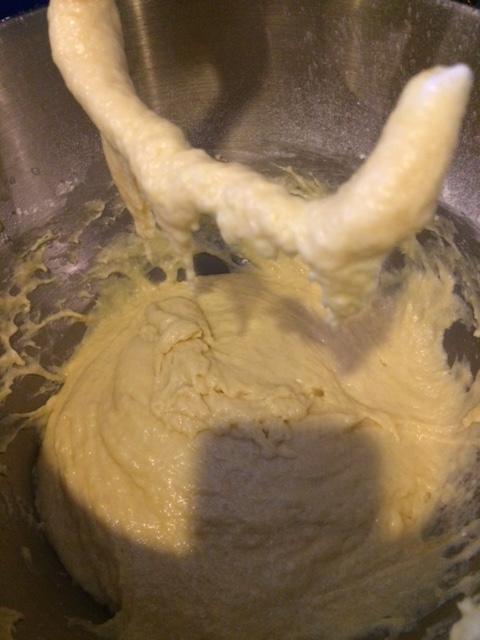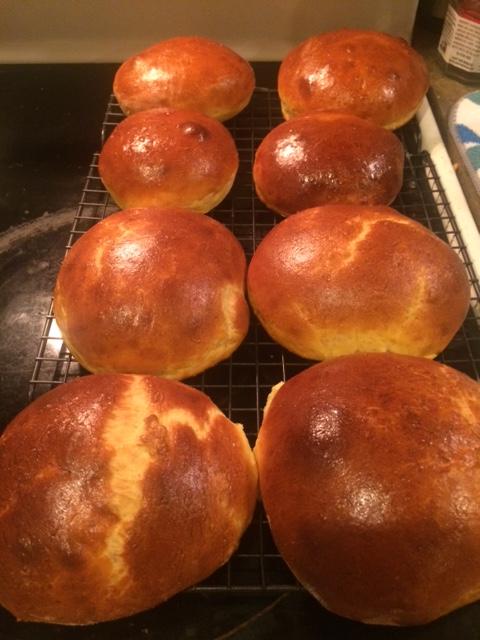I recently discovered a fantastic Youtube Channel called Tasting History, in which the host presents recipes from across history. In one such video, linked here, he describes the Sally Lunn Bun, a traditional bun made in Bath, England.
After seeing the video, I decided to try them for myself. The recipe is very straightforward. The only part that takes some extra attention is warming the milk and combining in the sugar and butter.
Ingredients:

- 1 ¼ cup (280ml) whole milk
- 6 tablespoons (85g) of butter at room temperature
- ¼ cup (50g) sugar
- 3 3/4 cup (450g) of bread flour (or all purpose)
- 7g instant yeast or active dry yeast.
- 2 eggs (Plus an extra egg for the egg wash)
- The zest of 1 lemon
- 1 ½ teaspoons of salt
- 2-3 saffron threads (optional; for color only)
1. Warm the milk over low heat.* Add the sugar and dissolve. Once warm, add the butter and melt in. If you are using saffron for color, add the threads to the milk and set mixture aside to cool to 110° or cooler before adding it to the other ingredients.
**If you are using instant yeast, heat the full amount of milk. If you are using active dry yeast, warm only 1 cup on the stove. Take the other 1/4 cup and mix with the yeast and a sprinkle of sugar to activate the yeast.
2. Sift flour into a large bowl or a stand mixer. If using instant yeast, whisk in to flour. Once milk mixture is cooled to 110° add to flour and mix (remove saffron threads with a strainer). Add lemon zest, eggs and salt and mix. If you are using active dry yeast, add that last. Work dough until it comes together and forms a smooth sticky dough. (About 8 minutes on medium speed) It will not form into a ball.

3. Cover and let rise for 60 - 90 minutes or until doubled in size.
4. Once doubled, punch down dough and put out onto a lightly floured surface and separate into 3 or 6 pieces, depending on the size bun you would like. Form dough into balls and place on lined baking sheet, slightly flattening into a cake. Cover and let rise for another 45 - 60 minutes.
5. Preheat oven to 400°F / 200°C and make an egg wash with either a whole egg or egg white (if you used the saffron for color).
6. Bake buns for 15 minutes, tenting them if they begin to brown too much. An instant read thermometer should read 190°F-200°F (approx.90°C). Cool on a wire rack and serve warm with butter, jam or clotted cream.

The end result are some of the softest, lightest buns I've ever enjoyed, period. Slightly sweet, very airy, and perfect with butter or jam. My wife is expecting these in the summer to be used as burger buns.
For those who have made brioche before, my understanding is that this is similar but a bit lighter. I'd love to know if that's true, since I've not made brioche yet.
I highly recommend these fantastic buns, and will definitely be making more of them myself!